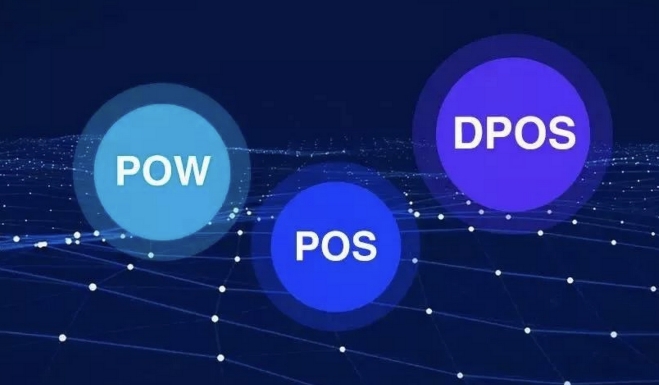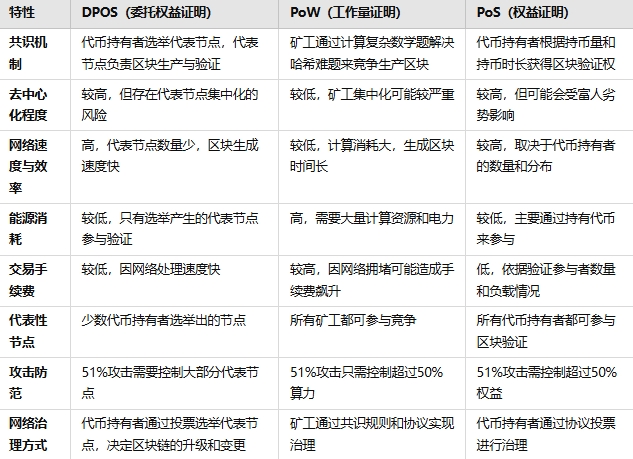Advantages and Challenges of DPOS Public Chains: A New Choice for Future Blockchain Networks
- latest articles
- 1.DApp Development & Customization: Merging Diverse Market Needs with User Experience 2.Analysis of the Core Technical System in DApp Project Development 3.How to achieve cross-chain interoperability in Web3 projects? 4.How does the tokenization of points reconstruct the e-commerce ecosystem? 5.How to Set and Track Data Metrics for a Points Mall? 6.What is DApp Development? Core Concepts and Technical Analysis 7.Inventory of commonly used Web3 development tools and usage tips 8.Development of a Distribution System Integrated with Social E-commerce 9.Six Key Steps for Businesses to Build a Points Mall System 10.What is DApp Development? A Comprehensive Guide from Concept to Implementation
- Popular Articles
- 1.Future Trends and Technology Predictions for APP Development in 2025 2.Analysis of the DeFi Ecosystem: How Developers Can Participate in Decentralized Finance Innovation 3.From Zero to One: How PI Mall Revolutionizes the Traditional E-commerce Model 4.DAPP Development | Best Practices for Professional Customization and Rapid Launch 5.Recommended by the Web3 developer community: the most noteworthy forums and resources 6.From Cloud Computing to Computing Power Leasing: Building a Flexible and Scalable Computing Resource Platform 7.How to Develop a Successful Douyin Mini Program: Technical Architecture and Best Practices 8.Shared Bike System APP: The Convenient Choice in the Era of Smart Travel 9.How to Create a Successful Dating App: From Needs Analysis to User Experience Design 10.From Design to Development: The Complete Process of Bringing an APP Idea to Life
With the rapid development of blockchain technology, the consensus mechanisms of decentralized networks are continuously evolving and innovating. Among various consensus mechanisms, DPOS (Delegated Proof of Stake) has gradually become one of the important choices for future blockchain networks due to its high efficiency, low cost, and good scalability. Many successful blockchain projects (such as EOS, TRON, and STEEM) have adopted the DPOS mechanism and achieved significant results. However, despite its many advantages, DPOS also faces some challenges in practical applications, and developers and project teams need to address these issues while promoting the development of DPOS.
This article will deeply analyze the advantages and challenges of DPOS public chains and explore their application prospects and development trends in future blockchain networks.

1. What is the DPOS Consensus Mechanism?
DPOS (Delegated Proof of Stake) is a blockchain consensus mechanism based on proof of stake. Unlike traditional PoW (Proof of Work) and PoS (Proof of Stake), DPOS does not require all nodes to participate in block production. Instead, it elects a small number of representative nodes (often called producer nodes) through voting, and these nodes are responsible for block generation and transaction validation.
Under the DPOS mechanism, token holders vote to elect a small number of representative nodes to participate in block validation. These representative nodes are periodically rotated to ensure decentralization and fairness in the network. Each token holder's voting power is proportional to the number of tokens they hold, thus achieving a good balance between decentralization and efficiency.
The DPOS mechanism has been adopted by many blockchain projects and has become a key innovation. Well-known public chains based on DPOS include EOS, TRON, and STEEM, which have made significant breakthroughs in performance, scalability, and governance mechanisms.
2. Advantages of DPOS Public Chains
2.1 High Transaction Processing Capability
A core advantage of DPOS is its high transaction processing capability. Since block generation is performed only by elected representative nodes, DPOS significantly reduces the number of nodes involved in block production, thereby increasing block generation speed and transaction confirmation speed. Compared to traditional PoW mechanisms, DPOS improves block generation efficiency by reducing unnecessary computational power consumption.
Taking EOS as an example, its block generation time is only 0.5 seconds, whereas traditional PoW chains (such as Bitcoin) require about 10 minutes to confirm a block. This rapid transaction confirmation feature of DPOS can support high-frequency transactions and large-scale applications.
2.2 Reduced Transaction Costs
By reducing the number of network participants, DPOS significantly lowers the cost of block production. Unlike the complex miner competition and computational power consumption in traditional PoW mechanisms, DPOS reduces computational waste through its delegated election mechanism, lowering transaction fees and system energy consumption.
In PoW-based public chains like Ethereum and Bitcoin, transaction fees often surge due to network congestion. In contrast, transaction costs in DPOS systems are relatively low, especially in high-frequency transactions and small payment scenarios, where DPOS demonstrates strong competitiveness.

2.3 Improved Decentralization Characteristics
Although DPOS adopts the method of electing representative nodes, its decentralization characteristics still exist. Token holders can vote for representative nodes they trust, ensuring network fairness and decentralization. The periodic rotation of representative nodes and the participation of token holders allow DPOS to avoid the risk of centralization to some extent.
Compared to the delegation mechanism in PoS, DPOS's election mechanism can enhance the quality of decentralized governance by incentivizing active participation from token holders. This voting-based election method ensures that token holders have a voice in network governance, effectively improving the system's flexibility.
2.4 Efficient Network Governance and System Upgrades
DPOS is not just a block production mechanism; it also features efficient network governance. Token holders not only participate in electing representative nodes but can also engage in network governance through voting, including protocol upgrades and parameter adjustments. This "democratic" governance approach enables DPOS public chains to quickly respond to community needs and implement system upgrades and protocol improvements.
Compared to other consensus mechanisms, DPOS avoids the fragmentation issues caused by hard forks in traditional blockchains. Token holders can optimize and upgrade the network through methods like soft forks, ensuring continuous system updates and improvements.
3. Challenges Faced by DPOS Public Chains
Although DPOS has demonstrated its advantages in many aspects, it still faces some challenges in practice. The following are key issues encountered by DPOS public chains during actual operation:
3.1 Centralization of Representative Nodes
Although the DPOS mechanism is inherently decentralized, due to the nature of the election mechanism, the concentration of power among representative nodes still exists. Since the election of representative nodes is based on a voting system tied to token holdings, it may lead to a few users or institutions with large amounts of tokens controlling the network. This centralization can affect the network's decentralization characteristics and, in some cases, result in an "oligopoly" of representative nodes.
This phenomenon has already appeared in some DPOS public chains, causing governance imbalances and even issues of "representative nodes manipulating the network." Therefore, to avoid centralization problems, DPOS needs to introduce more preventive measures, such as adjusting the voting mechanism and limiting the consecutive tenure of certain nodes.
3.2 Abuse of Voting Rights
In DPOS systems, the voting power of token holders is allocated based on the number of tokens they hold, meaning that large holders or "whales" have more voting power. This can lead to unfairness in the voting process, especially when tokens are highly concentrated.
If a large organization or individual holds a significant number of tokens, they may vote for representative nodes that favor their interests, thereby influencing the entire network's governance and development. Therefore, DPOS public chains need to take measures to balance voting power and prevent token holders from abusing their power.
3.3 Security Issues of Representative Nodes
Representative nodes in DPOS systems bear the critical responsibilities of transaction validation and block production. If a representative node is attacked or fails, it may affect the security and stability of the entire network. Although DPOS systems provide some security through node rotation and election mechanisms, frequent attacks or failures of representative nodes could lead to serious issues such as transaction processing delays and system crashes.
To mitigate this risk, DPOS systems need to enhance the security of representative nodes through technical means such as node redundancy, distributed storage, and anti-attack mechanisms to improve the system's fault tolerance.
3.4 Risk of 51% Attacks
Although the DPOS mechanism avoids the energy waste and computational competition of PoW, it still faces the risk of 51% attacks. If most representative nodes are maliciously controlled, attackers can modify the blockchain's transaction records and even launch double-spending attacks. To prevent this risk, DPOS public chains need to find a balance between security and scalability and strengthen their ability to resist attacks.
4. Future Prospects of DPOS Public Chains
Despite the challenges faced by the DPOS mechanism, it shows great potential in the innovation and application of blockchain technology. In the future, with continuous optimization and improvement of the DPOS mechanism, it will be able to address existing centralization issues, enhance network security, and gain widespread application in more fields.
In areas such as decentralized finance (DeFi), digital identity management, and supply chain management, DPOS offers high efficiency and good scalability, supporting large-scale, high-frequency transactions. Additionally, DPOS's fast transaction confirmation and low transaction fees give it a clear advantage in application scenarios like cross-border payments and micropayments.
In the future, with technological advancements and active community participation, DPOS is likely to become an important part of global public chain networks and occupy a more significant position in blockchain technology.
5. Conclusion
As an innovative blockchain consensus mechanism, DPOS is gradually becoming an important choice in decentralized networks. With its efficiency, low cost, and flexible governance mechanism, it stands as one of the representatives of blockchain technology. Although it faces challenges such as the centralization of representative nodes and the abuse of voting rights, these issues are expected to be effectively resolved with continuous technological optimization.
For blockchain developers and project teams, understanding the advantages and challenges of DPOS, as well as how to overcome these difficulties in practical applications, will help drive the development of blockchain technology and lay a solid foundation for its future.
-

How to achieve cross-chain interoperability in Web3 projects?
With the continuous development of WEB3 technology, Web3 has gradually become an···
-

Inventory of commonly used Web3 development tools and usage tips
With the continuous development of blockchain technology, Web3 has become a hot ···
-

Web3 development trend prediction: analysis of future technology directions and application scenarios
With the gradual development of blockchain technology, the concept of Web3 has m···

 Blockchain
Blockchain










